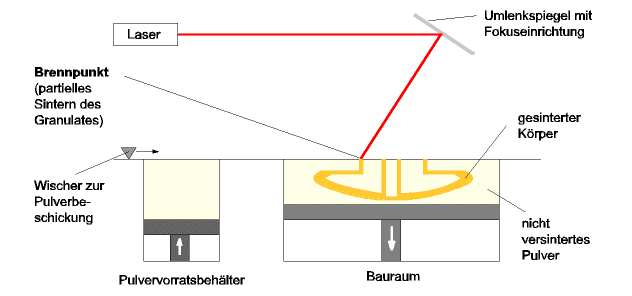
Stereolitographie (STL)
The solidification of liquid polymer through Polymerization is named Stereo lithography. The Firm “3D Systems” has named this process Stereo lithography, on the other hand, the Firm “EOS” calls it Stereography. Both ideas are registered trademarks of their respective companies.
Principally, Stereo lithography
equipment requires only one container, which acts as build space
and supply stock at the same time. When the liquid polymer is
exposed to a laser, it solidifies. When the laser is controlled,
it is possible to draw a shape which corresponds to the layer
information of the CAD design. The rapid prototype is built upon
a platform. After the solidification of one layer, the platform
is shifted downward, according to a defined layer thickness, and the
next layer is solidified.
This process demands the simultaneous construction of a support
construction to hold the piece during the build process. There are
unreachable areas that are not hardened and thus the overlaid layers do
not offer support for transitions.
The technology requires that the
finished piece be washed in a solvent and then treated in a UV
oven. The final solidification of the polymer binding occurs
there, based upon the stability of the supports.

Picture: Illustration of the Stereo Lithography Process.
Application:
| Advantages | Disadvantages |
|
|